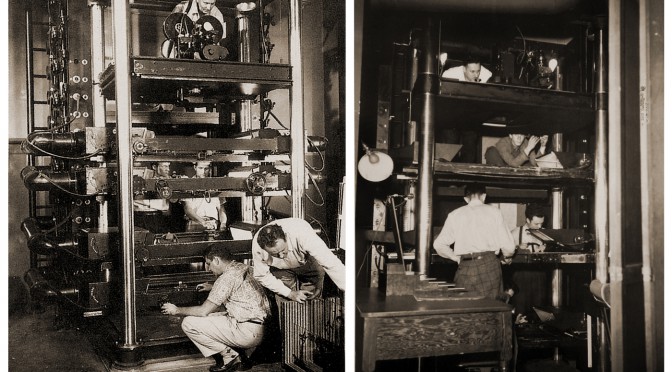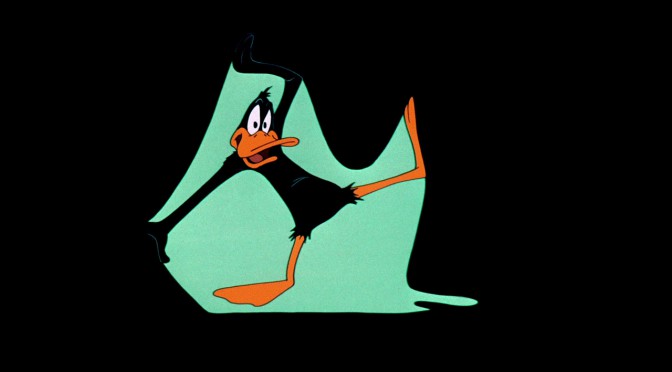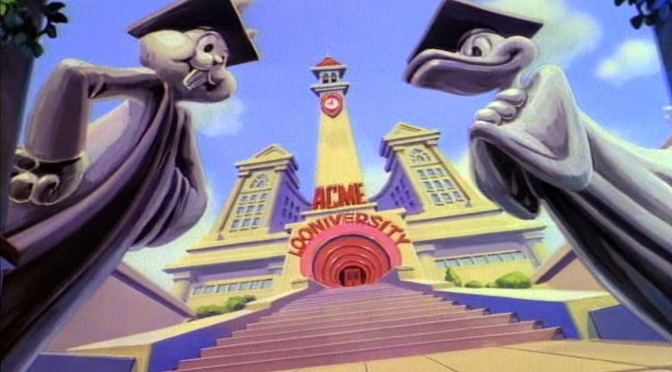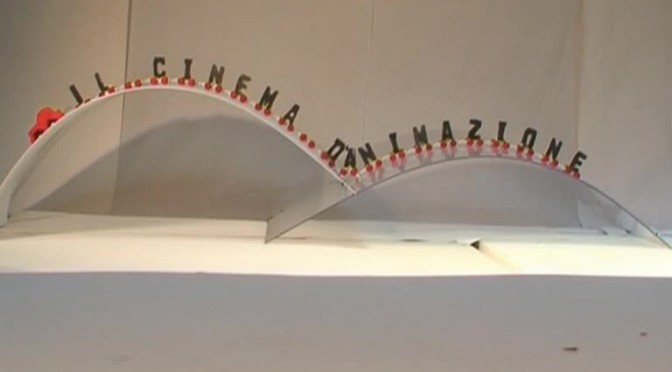Snow-White (Dave Fleischer, 1933)
The Goddess of Spring (Wilfred Jackson, 1934)
Gulliver’s Travels (Max and Dave Fletcher, 1939)
“The World of Stainboy”, Episode 1 (Tim Burton, 2000)
Animata Didattica mette a disposizione informazioni e materiali riguardanti i corsi teorici e pratici sull’animazione attivati presso l’Università degli Studi di Padova. Per chi già studia, e per chi vorrebbe farlo in futuro.

Snow-White (Dave Fleischer, 1933)
The Goddess of Spring (Wilfred Jackson, 1934)
Gulliver’s Travels (Max and Dave Fletcher, 1939)
“The World of Stainboy”, Episode 1 (Tim Burton, 2000)

Walt Disney’s Multiplane Camera
Trolley Troubles (Walt Disney, 1927)
The Thief and the Cobbler (Richard Williams, 1993)

Duck Amuck (Chuck Jones, 1953)
Neighbours (Norman McLaren, 1952)
Blinkity Blank (Norman McLaren, 1955)

Il corso di History of Animation è attivo dal 2014-2015 presso l’Università degli Studi di Padova. Possono frequentarlo gli studenti del primo anno del Corso di Laurea Magistrale in Scienze dello Spettacolo e della Produzione Multimediale del Dipartimento dei Beni Culturali.
Luogo e ora
Dal 13 ottobre 2014
42 ore
Lunedì, 16:30-18:00
Martedì, 16:30-18:00
Palazzo Liviano, Aula 2
Prerequisiti
Per frequentare al meglio il corso di History of Animation è consigliabile avere dimestichezza con i fondamenti della storia del cinema e con il linguaggio della teoria e dell’analisi del film. Ancor più consigliabile di queste basi teoriche, però, sarebbe l’abitudine a vedere film (con spirito critico). Avere nel proprio bagaglio un solido “repertorio” cinematografico, ed essere disposti ad ampliarlo, costituisce un’ottima credenziale per partecipare a questo corso. Per finire, sarebbe opportuna anche una buona capacità d’uso e comprensione dell’inglese, lingua in cui sarà erogato il corso.
Conoscenze e abilità da acquisire
Al termine del corso, lo studente di History of Animation:
– conoscerà procedimenti e modelli produttivi delle principali tecniche d’animazione;
– saprà identificare in un testo audiovisivo le tecniche d’animazione, valutandone criticamente l’uso;
– conoscerà le caratteristiche essenziali e la storia delle principali scuole e tradizioni di animazione.
Modalita’ di esame
L’esame sarà orale, per i frequentanti e per i non frequentanti.
Per i frequentanti l’esame verterà sulle lezioni del corso e sulle dispense fornite dal docente. Inoltre, sarà fornita all’inizio delle lezioni una lista di film, all’interno della quale gli studenti dovranno scegliere quindici titoli. I film scelti andranno visti integralmente e potranno essere oggetto di discussione in sede d’esame.
Per sostenere l’esame da frequentanti si consiglia la frequenza di almeno 38 ore di lezione su 42. Le lezioni non frequentate dovranno comunque essere recuperate, tramite l’ausilio di appunti forniti da colleghi studenti. L’assenza a una determinata lezione non costituisce giustificazione: in sede d’esame si presupporrà che lo studente conosca il 100% dei contenuti del corso.
Si consiglia di seguire il corso da frequentanti. I non frequentanti, oltre a non avere la possibilità di usufruire degli esempi video su cui si baserà il corso, saranno tenuti a studiare due manuali completi in inglese. Sarà richiesta la visione di 15 film scelti dalla lista di cui sopra, come per i frequentanti.
Poiché si prevede un numero modesto di studenti iscritti alle varie sessioni d’esame, si prega di contattare tempestivamente (almeno un giorno prima) il docente in caso di assenza. La lista d’esame chiuderà sempre tre giorni prima dell’appello.
Criteri di valutazione
Durante l’esame, si valuteranno:
– capacità di inquadrare storicamente, con buona precisione, artisti, opere e scuole;
– conoscenza delle caratteristiche tecniche ed estetiche di ogni tipo di animazione;
– capacità critica e analitica nel commentare i film e le opere audiovisive.
Contenuti
1) Definizione di animazione
2) Tecniche e stili di animazione
3) Origini dell’animazione: pionieri, scuole dei primordi
4) Animazione negli Stati Uniti. Monografia: Walt Disney
5) Animazione in Europa
6) Animazione in Italia. Monografia: Bruno Bozzetto
7) Animazione in Asia. Monografia: Studio Ghibli
8) Animazione in altri paesi
9) Animation studies: principali tendenze teoriche
Attivita’ di apprendimento previste e metodologie di insegnamento
Il corso si baserà sulle lezioni del docente, integrate da opportuni materiali audiovisivi.
Sarà favorito il confronto e il dibattito con gli studenti.
È previsto almeno un intervento di un importante professionista del cinema d’animazione.
Indicazioni sui materiali di studio
I frequentanti dovranno prepararsi sugli appunti del corso (integrabili dai file Powerpoint che il docente condividerà). Il docente inoltre invierà a ciascuno studente delle dispense da stampare e studiare, tratte dai libri elencati in bibliografia, che dunque non andranno studiati per intero.
I non frequentanti dovranno studiare per intero i testi di Bendazzi e Selby, reperibili presso le biblioteche dell’Ateneo (in sola consultazione).
Testi di riferimento

Tutte le otto sigle, realizzate con varie tecniche del cinema a passo uno, costituiscono l’esito didattico del Laboratorio durante il quale gli studenti universitari apprendono varie tecniche giungendo infine a produrre brevi scene animate.
Gli studenti che hanno partecipato alla realizzazione dei lavori:
Giuseppe Andreatta; Barbara Bittante; Leonardo Bortoli; Giulia Casarotto; Giuseppe Nicola Cosentino; Marta De Giglio; Rita Fantinato; Carolina Fernandez Barroso; Luigi Giacomazzi; Alessia Ghion; Eleonora Giavarina; Sarah Jessica Fioretto; Laura Novello; Francesca Silvestri; Martina Turra; Valeria Venturelli; Fabiano Verza;
(stagista, Elena Faggioli)
FLIPBOOK (pixillation, disegno, pennarelli a secco, découpage):
TRENINO (pixillation, plastilina, découpage):
OMINO (disegno, pennarelli a secco, pixillation, découpage, plastilina):
PIX (pixillation):
JACK (disegno, stop-motion):
CUBO (disegno, pixillation, découpage):
PESCATORE (disegno, stop-motion, pennarelli a secco, sabbia, découpage):
MANI (disegno, pixillation, découpage):